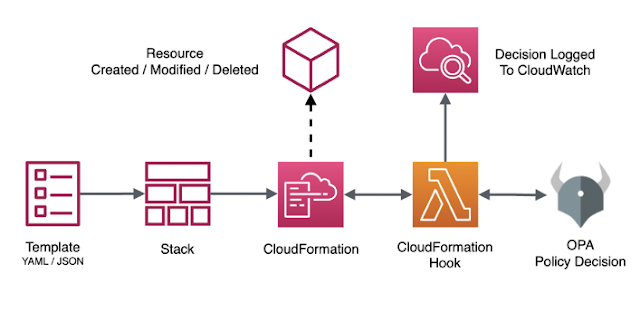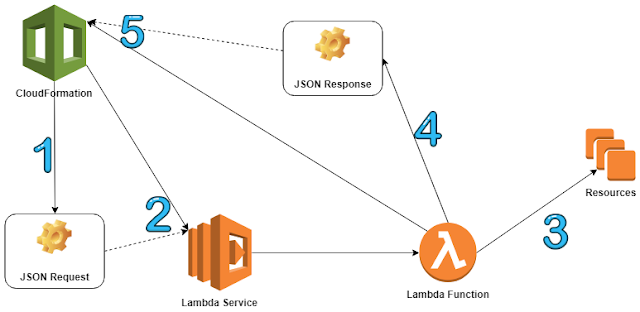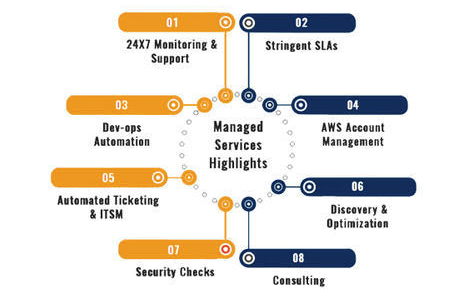What is the use of AWS CloudFormation?
Introduction
AWS CloudFormation is a service provided by Amazon Web Services that enables developers to model and provision AWS resources and their dependencies in a secure and automated way. It allows users to manage their entire infrastructure as code, providing a reliable and efficient way to deploy and update resources in a repeatable and consistent manner.
Explanation of AWS CloudFormation Templates
An AWS CloudFormation Template is a JSON or YAML file that defines the AWS resources and the relationships between them. The template can be used to create, update, and delete AWS resources in a predictable and repeatable way. The templates are written in a declarative language, meaning that the developer specifies what they want the infrastructure to look like, rather than how to create it. The templates can include a wide variety of AWS resources, such as EC2 instances, load balancers, databases, and security groups.
AWS CloudFormation Templates offer several benefits to developers and system administrators. By using templates, developers can ensure that their infrastructure is created consistently, which reduces errors and saves time. Templates also make it easier to manage and maintain the infrastructure over time, because they provide a clear, human-readable view of the infrastructure.
The role of stacks in AWS CloudFormation
In AWS CloudFormation, a stack is a collection of AWS resources that are created and managed as a single unit. Stacks are created from templates, and they can be updated, deleted, and rolled back as a single unit. Stacks make it easy to manage complex infrastructures, because they allow developers to organize and group resources logically.
Stacks are used in AWS CloudFormation to manage the lifecycle of AWS resources. When a stack is created, AWS CloudFormation creates the resources defined in the stack's template. When a stack is updated, AWS CloudFormation makes the necessary changes to the existing resources, and creates any new resources that are defined in the updated template. When a stack is deleted, AWS CloudFormation deletes all of the resources in the stack.
In addition to managing the lifecycle of AWS resources, stacks also provide several benefits to developers and system administrators. Stacks make it easy to create and manage infrastructure in a repeatable and predictable way, which reduces errors and saves time. They also make it easier to manage and maintain the infrastructure over time, because they provide a clear, human-readable view of the infrastructure.
Benefits of using AWS CloudFormation
Efficient and reliable infrastructure management, automation of infrastructure deployment, and consistent and repeatable infrastructure provisioning are three key benefits of using AWS CloudFormation.
Infrastructure management is a complex and challenging task, requiring significant time, resources, and expertise. AWS CloudFormation provides a comprehensive solution for managing infrastructure that enables you to manage your resources effectively, reliably, and efficiently. With AWS CloudFormation, you can manage your infrastructure using code, which ensures that you can track changes, manage configurations, and maintain consistency across your resources.
Automation of infrastructure deployment is another significant benefit of AWS CloudFormation. With AWS CloudFormation, you can automate the deployment of your infrastructure resources, such as EC2 instances, RDS databases, and S3 buckets, using templates. Templates provide a declarative way to describe the infrastructure resources you want to create, update, or delete. You can use AWS CloudFormation to create stacks, which are collections of resources that you can manage as a single unit.
Consistent and repeatable infrastructure provisioning is a crucial benefit of AWS CloudFormation. When you use AWS CloudFormation to manage your infrastructure, you can ensure that your resources are consistent and repeatable. You can create templates that define the resources and configurations required for your infrastructure. By using these templates, you can ensure that your infrastructure is deployed consistently and that changes are made in a repeatable manner. This ensures that your infrastructure is always in a known and stable state.
In conclusion, AWS CloudFormation provides several benefits for managing your infrastructure, including efficient and reliable infrastructure management, automation of infrastructure deployment, and consistent and repeatable infrastructure provisioning. By using AWS CloudFormation, you can reduce the time, resources, and expertise required to manage your infrastructure, increase the reliability of your resources, and ensure that your infrastructure is always in a known and stable state.
Use cases of AWS CloudFormation
AWS CloudFormation is a service offered by Amazon Web Services (AWS) that enables developers to deploy and manage infrastructure as code. It provides a simple, efficient, and reliable way to manage infrastructure resources, automate infrastructure deployments, and provision infrastructure consistently and repeatedly. AWS CloudFormation templates are used to define the infrastructure resources that make up a stack, and stacks can be used to manage environments such as developing and testing, production, and disaster recovery.
Developing and testing environments are one of the most common use cases of AWS CloudFormation. Developers can use AWS CloudFormation to provision resources such as Amazon Elastic Compute Cloud (EC2) instances, Amazon Simple Storage Service (S3) buckets, and Amazon Relational Database Service (RDS) instances for their development and testing environments. AWS CloudFormation templates can be used to automate the deployment of these resources, reducing the time and effort required to create and configure environments.
Production environments are critical to the success of any application. AWS CloudFormation provides a simple and reliable way to deploy and manage infrastructure resources in production environments. AWS CloudFormation templates can be used to create, update, and delete resources in production environments, ensuring that infrastructure changes are applied consistently and without errors. This makes it easier to manage and scale the infrastructure required to support high-traffic and high-availability applications.
Disaster recovery scenarios are another important use case for AWS CloudFormation. AWS CloudFormation templates can be used to create and manage disaster recovery environments that are replicas of production environments. These environments can be used to quickly and efficiently recover from disasters such as hardware failures, network outages, or natural disasters. By using AWS CloudFormation to manage disaster recovery environments, organizations can ensure that their critical applications are always available, even in the event of a major disaster.
In conclusion, AWS CloudFormation is a powerful tool for managing infrastructure as code, and it is particularly useful for managing environments such as developing and testing, production, and disaster recovery. With AWS CloudFormation, developers and IT professionals can automate the deployment of infrastructure resources, ensure consistent and reliable infrastructure provisioning, and simplify infrastructure management. This makes it easier to develop and deploy applications quickly and efficiently, while also ensuring that critical applications are always available, even in the event of a disaster.
AWS CloudFormation features
AWS CloudFormation is a service that allows you to manage and automate the deployment of infrastructure resources in the cloud. One of the key features of AWS CloudFormation is resource management. With resource management, you can define and provision a set of AWS resources in a consistent and repeatable manner, which can help you reduce the time and effort required to deploy and manage your infrastructure.
Rollback and undo is another important feature of AWS CloudFormation. It allows you to revert to a previous version of your infrastructure stack in the event of a failure or error during deployment. This can help you avoid lengthy downtime and potential data loss, and ensure that your infrastructure remains operational and available.
Drift detection is a feature of AWS CloudFormation that helps you identify and resolve any differences between the resources defined in your templates and the actual resources that have been provisioned in your stack. With drift detection, you can quickly identify any unexpected changes to your infrastructure, and take corrective action to keep your resources aligned with your desired configuration.
Change sets allow you to preview the changes that will be made to your infrastructure before actually deploying them. This can help you identify potential issues or conflicts, and ensure that your changes will not impact the performance or availability of your applications.
Nested stacks are another key feature of AWS CloudFormation. With nested stacks, you can create a stack that references another stack, allowing you to break down your infrastructure into smaller, more manageable components. This can help you avoid complexity and improve the scalability of your infrastructure, while also making it easier to update and maintain your stacks.
In conclusion, AWS CloudFormation provides a powerful set of tools for managing and automating the deployment of infrastructure resources in the cloud. By leveraging features such as resource management, rollback and undo, drift detection, change sets, and nested stacks, you can ensure that your infrastructure is deployed and managed in a consistent, reliable, and scalable manner. Whether you are deploying a new application, updating an existing one, or managing a complex network of resources, AWS CloudFormation can help you streamline your infrastructure management and improve your overall productivity and efficiency.
How to use AWS CloudFormation
AWS CloudFormation is a powerful tool that enables users to deploy and manage infrastructure as code. When using AWS CloudFormation, it is important to follow best practices to ensure smooth deployment and management of resources. In this article, we will discuss some of the best practices for AWS CloudFormation, including the use of AWS CloudFormation Designer, keeping templates simple, version control of templates, and use of AWS CloudFormation APIs.
Use of AWS CloudFormation Designer AWS CloudFormation Designer is a visual tool for creating, viewing, and modifying CloudFormation templates. The tool provides an intuitive drag-and-drop interface that enables users to create and edit templates quickly and easily. AWS CloudFormation Designer is particularly useful when creating complex templates that include multiple resources and dependencies.
Keeping templates simple When creating CloudFormation templates, it is important to keep them as simple as possible. Simple templates are easier to understand, troubleshoot, and maintain. To keep templates simple, users should avoid including unnecessary resources or dependencies. Users should also use intrinsic functions and conditions to simplify their templates.
Version control of templates Version control is an essential part of software development, and it is equally important when working with CloudFormation templates. Users should store their templates in a version control system such as Git or SVN. This allows them to track changes to their templates, roll back to previous versions if necessary, and collaborate with other users.
Use of AWS CloudFormation APIs AWS CloudFormation APIs allow users to automate the deployment and management of CloudFormation stacks. Users can use the APIs to create, update, and delete stacks, as well as to retrieve information about the status of stacks. The APIs can also be used to integrate CloudFormation with other AWS services, such as AWS Lambda and Amazon SNS.
In conclusion, following best practices for AWS CloudFormation can help users to deploy and manage infrastructure as code efficiently and effectively. Users should take advantage of tools like AWS CloudFormation Designer, keep their templates simple, use version control, and leverage AWS CloudFormation APIs to automate the management of CloudFormation stacks. By doing so, they can ensure the success of their infrastructure deployments and simplify their infrastructure management processes.
Limitations of AWS CloudFormation
AWS CloudFormation is a powerful tool for infrastructure automation, but it does have some limitations that users should be aware of. In this section, we will explore some of the limitations of AWS CloudFormation.
First, one limitation of AWS CloudFormation is that it can be challenging to use for complex deployment scenarios. While it is possible to model and deploy complex infrastructure with AWS CloudFormation, it can require significant effort and expertise to create templates that handle all the necessary components and dependencies. For users who have particularly complex environments, AWS CloudFormation may not be the best tool for their needs.
Another limitation of AWS CloudFormation is its limited support for certain resource types. While AWS CloudFormation supports a broad range of AWS resources, some resources are not supported, and this can cause difficulties for users. In some cases, users may need to find workarounds to deploy unsupported resources, which can add complexity and cost to the deployment process.
A third limitation of AWS CloudFormation is the pricing model. AWS CloudFormation charges users based on the number of stack resources created, which can result in unexpected charges if stacks are created or updated frequently. Additionally, certain actions like stack deletions can be expensive, particularly if they involve large numbers of resources.
Despite these limitations, AWS CloudFormation remains a popular tool for infrastructure automation and deployment. Users who understand the limitations of AWS CloudFormation can work around them or choose alternative tools when necessary to achieve their desired outcomes. By carefully planning and modeling their infrastructure, users can use AWS CloudFormation to save time, reduce errors, and create consistent and repeatable deployments.
Conclusion
AWS CloudFormation is a powerful tool for infrastructure automation, but it does have some limitations that users should be aware of. In this section, we will explore some of the limitations of AWS CloudFormation.
First, one limitation of AWS CloudFormation is that it can be challenging to use for complex deployment scenarios. While it is possible to model and deploy complex infrastructure with AWS CloudFormation, it can require significant effort and expertise to create templates that handle all the necessary components and dependencies. For users who have particularly complex environments, AWS CloudFormation may not be the best tool for their needs.
Another limitation of AWS CloudFormation is its limited support for certain resource types. While AWS CloudFormation supports a broad range of AWS resources, some resources are not supported, and this can cause difficulties for users. In some cases, users may need to find workarounds to deploy unsupported resources, which can add complexity and cost to the deployment process.
A third limitation of AWS CloudFormation is the pricing model. AWS CloudFormation charges users based on the number of stack resources created, which can result in unexpected charges if stacks are created or updated frequently. Additionally, certain actions like stack deletions can be expensive, particularly if they involve large numbers of resources.
Despite these limitations, AWS CloudFormation remains a popular tool for infrastructure automation and deployment. Users who understand the limitations of AWS CloudFormation can work around them or choose alternative tools when necessary to achieve their desired outcomes. By carefully planning and modeling their infrastructure, users can use AWS CloudFormation to save time, reduce errors, and create consistent and repeatable deployments.
Read More : What is AWS CloudFormation






Comments
Post a Comment